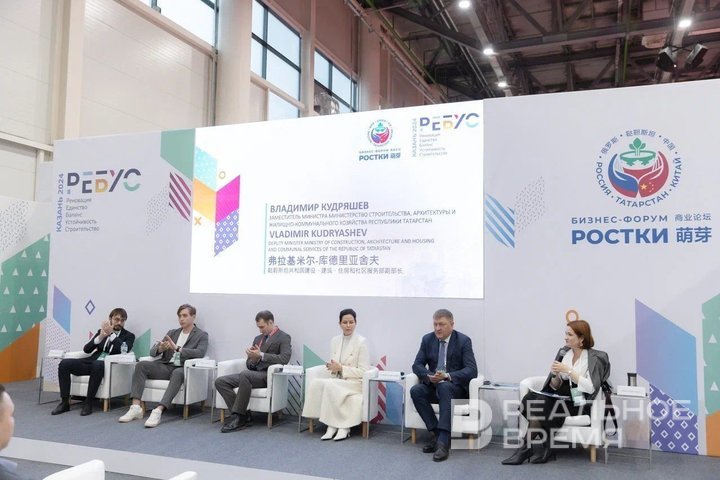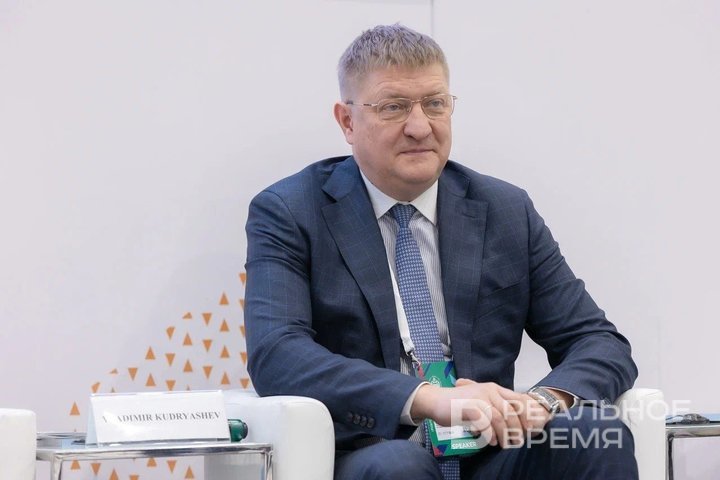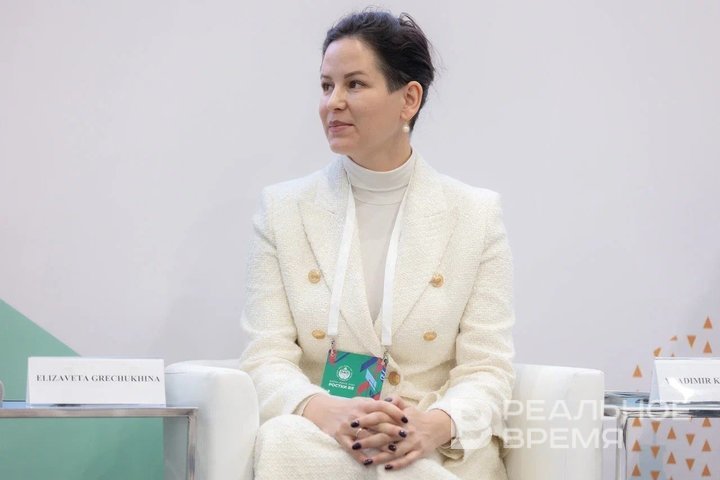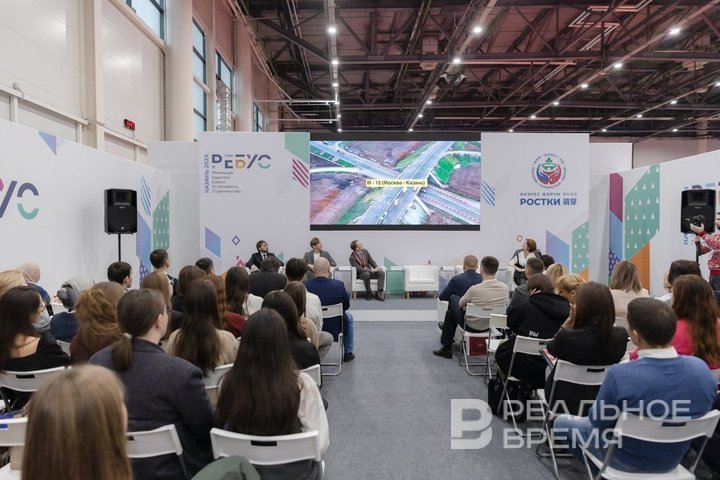Regulation of traffic flows, dialogue between developers and authorities: how the Kazan agglomeration will develop
At REBUS forum, the authorities of Tatarstan and developers discussed the problems and prospects for the development of territories

The pace of housing construction in Laishevo District of Tatarstan should be increased with caution in order not to face an overload of transport and social infrastructure, says Deputy Minister of Construction, Architecture and Housing and Public Utilities of Tatarstan Vladimir Kudryashyov. In turn, Zelenodolsk District hopes to finally lure Kazan residents who work in its industrial zones through the creation of new housing complexes. At Agglomeration is Coming. For Love or a Forced Choice? Session at REBUS International Forum, experts discussed the problems and prospects for the development of the Kazan agglomeration. Read more in a report of Realnoe Vremya.
How to protect Laishevo District from a transport collapse
Today, Russia is seeing record rates of housing construction, said its moderator, authorised representative of the Russian Guild of Managers and Developers in Tatarstan Yelena Stryukova, at the beginning of the session. In 2023, more than 110 million square metres of housing were commissioned in the country. In our republic, this figure was 3.5 million square metres. Given the shortage of land within the city limits, the bulk of housing delivery occurs in agglomerations, which leads to an overload of the infrastructure. To solve this problem, a number of large-scale infrastructure projects are being implemented in Tatarstan with federal support, for example, Bolshoy Zelenodolsk and the Laishevsky hub.
“We hope that the Kazan Marina project located in Laishevo District, in close proximity to Laishevo, will still happen,” said Deputy Minister of Construction, Architecture and Housing and Public Utilities of the Republic of Tatarstan Vladimir Kudryashyov. “There is a very serious potential for housing construction. Today, about 4.5 million square metres can be built in general thanks to the approved and developed documents: either an issued construction permit or an approved planning project.”

However, without the development of transport and social infrastructure, such a volume of work will lead to increased tension among the population and collapses on the roads. Therefore, the authorities have determined when and in what volume it will be possible to carry out housing construction and under what conditions an increase in its volume is permissible, the speaker assured the audience.
Zelenodolsk is trying to lure Kazan residents
Zelenodolsk District has taken the path of developing industrial parks. More than 26,500 jobs have appeared on its territory due to logistics centres alone, said the city’s chief architect Damir Shakirov. In order for employees to have a place to live, more than 5.5 million square metres are planned to be built on the territory of Big Zelenodolsk. The speaker was glad that federal developers are coming to the district.

Experts also touched on the topic of pendulum labour migration.
He expressed hope that the transport situation will become more favourable in the future. “After all our developers build comfortable residential complexes near these workplaces, people will choose places to live closer to work," the speaker believes.

Chief architect of A101 Group of Companies in Saint Petersburg, head of the pre-project preparation of investment and development projects of the group Yelizaveta Grechukhina believes that pendulum migration can exist, but it is important to regulate it. How to do this? When implementing development projects, create places of employment where residents of new areas can work. This will help reduce the time spent on the road.
The expert emphasised that studies show that the level of happiness of people who spend more than an hour and a half on the road to work decreases sharply. This means that the task of developers and regulators is the comprehensive creation of jobs near places of residence, said Yelizaveta Grechukhina.
“When we develop a territory according to the greenfield scheme (the author’s note: an approach that involves the creation of a new district on undeveloped land), then, of course, we calculate the potential load on the transport network. But the most important thing is to create conditions for work within our territory: all commercial ground floors, separate shopping malls, social facilities as well as large anchor projects that will become a point of attraction for all of Central Russia facilitate it. Today, about 35% of residents do not leave the territories where they live. 65% go somewhere to work. We consider this balance to be good. That is, the city does not “die out” during the day, the territory are filled with people,” she said about the approach of A101 Group.

The development of agglomerations is impossible without the political will of the authorities
The creation of jobs in new areas is a common task of developers and authorities, as was repeatedly discussed within the framework of the REBUS session. Yelizaveta Grechukhina also shares this point of view. In her opinion, for such a dialogue to take place, all parties need a common understanding of the goals and the ability to speak the same language.
The speaker named the projects of A101 Group in New Moscow as an example of such communication. “In this location, we see one of the unique examples of effective interaction between developers and authorities not only for Russian, but also for global practice. Here, new areas are not just built in an open field, they are immediately provided with transport infrastructure. At the same time, the authorities, using urban planning tools and co-financing, promote the emergence of large-scale business projects in new areas: business quarters, an indoor water resort, and even an entire ski resort will be built here. Thus, the territory is developing harmoniously, and the level of comfort for residents is growing, as is the amount of taxes paid to the budget,” the expert said.
As part of the session, she shared the company's experience in implementing integrated development in New Moscow and Leningrad Region. The guest also assessed the development of the Kazan agglomeration.

“I was amazed by the amount of infrastructure and land areas associated with the development of jobs, logistics complexes. In an average Russian city, it is usually accepted that 70% of the territory is allocated for housing, 30% for places of employment. From what I saw, you have significantly more places of employment in proportion. It is interesting to speculate what this is connected with, whether they are all really in demand and filled with investors, she reflected.
In order to develop the Kazan agglomeration, it is necessary to improve communication between municipalities. Thus, the deputy minister of construction, architecture and housing and communal services of the republic complained: “In 2018, we signed an inter-municipal agreement on agglomeration development between Kazan and five suburban districts. But this document did not go anywhere.” Vladimir Kudryashev recalled the proposal made at the plenary session of REBUS to create a coordination and analytical centre that will prepare decisions on the development of the agglomeration.
Such a body will help establish interaction, the speaker hopes. “Now, together with the Institute of Space Planning, we will also prepare such proposals and submit them to the level of the government of the Republic,” he said. What will be the driver of the development of the Kazan agglomeration in the future — private houses or apartment buildings? According to Yelena Stryukova, today many major experts talk about urbanisation, predicting that up to 75% of the population will live in cities. At the same time, the number of organised cottage villages near the capital of Tatarstan has been growing since 2004. So, in the Kazan agglomeration, there are multidirectional trends: both the development of the apartment building market and interest in suburban life, spurred since the pandemic, concluded the session moderator.